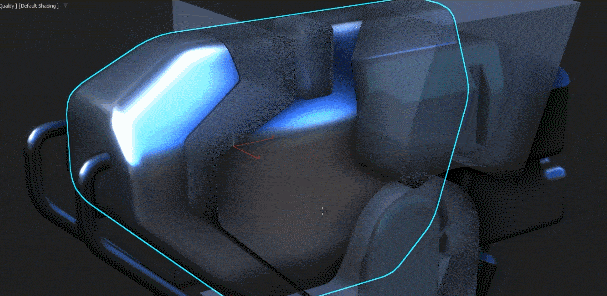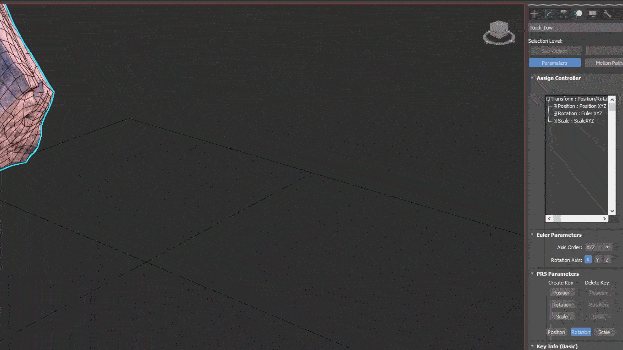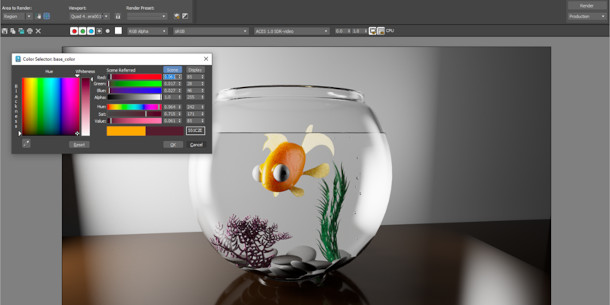Autodesk ships 3ds Max 2024
Autodesk has released 3ds Max 2024, the latest version of its 3D modelling and rendering software.
The update adds a new Boolean modifier for procedural modelling, extends the Array modifier and Slate Material Editor, and introduces experimental support for OCIO colour management.

3D modelling: new Boolean modifier for procedural workflows
New features in 3ds Max 2024 include a new Boolean modifier for Boolean modelling.
It has a range of modes for combining multiple source objects into a single mesh, including Untion, Subtract, Intersect, Split and Merge, and produces “clean geometric output”.
Unlike the existing ProBoolean and Boolean compound objects, which it supersedes, it is located in the Modifier stack, making it possible to work procedurally by adding, removing or re-ordering modifiers.
The new modifier also has an OpenVDB meshing option, which converts the source objects to volumes before calculating the Boolean operation, then converts the result back to polygons.
Working in this way retopologises the geometry, generating a uniform quad-based mesh.
Users can control the result by adjusting a Voxel Size parameter, with smaller values resulting in higher output polygon counts, but sharper meshes.

3D modelling and scene layout: updates to the Array modifier
The Array modifier introduced in 3ds Max 2023.2 has been extended, with a new Phyllotaxis distribution method to generate spiral patterns like those seen in flowers.
It is also now possible to incrementally vary transforms applied to the instances generated by the Array modifier, and to assign materials to the instances on a per-face or per-element basis.
3D modelling: performance and workflow improvements
There are also performance improvements to key modifiers, with the Smooth modifier‘s Auto Smooth option now “at least 10% faster” when working on Editable Mesh objects or with an Edit Mesh modifier.
The enhanced retriangulation algorithm introduced for the Editable Poly object in 3ds Max 2023.2 is now also used by the Edit Poly modifier, which should result in cleaner geometry.
Workflow improvements include a new search filter in the Modifier stack, making it possible to search for modifiers by name.

Materials: new Material Switcher and Compound nodes
3ds Max’s Slate Material Editor gets a new Material Switcher node for switching between variant materials, making it possible to quickly preview variant looks for an object.
Users can also now package groups of nodes into Compound nodes to keep material graphs organised.
Workflow improvements include the option to dock the editor anywhere in the 3ds Max interface, to customise its colour scheme, and to set wires to display behind nodes in the node graph.

Animation: new Transform List controller and updates to motion paths
Animators get a new Transform List controller, making it possible to add multiple Transform controllers to an object as layers of blended animation data.
In addition, motion paths now work with List controllers, and can be displayed for all controller types.

Rendering: initial support for OCIO colour management
The update also introduces support for the OpenColorIO (OCIO) colour-management standard used in VFX and animation pipelines, and supported in many other DCC applications.
The implementation in 3ds Max 2024 is officially a tech preview, so the existing gamma workflow is still used by default in new scenes.
Other changes: faster STL import and updates to MAXtoA
Other changes include improvements in import of STL files, which is now “up to 10,000x faster”.
In addition, Autodesk Revit Interoperability and Autodesk Inventor Interoperability are now installed on demand when first importing a Revit or Inventor model, rather then being part of the 3ds Max installer.
Outside the core application, 3ds Max’s Arnold and Substance plugins have been updated.
MAXtoA 5.6.0.100 adds support for OCIO workflow and the new Material Switcher, and updates the physical sky to separate light contributions from the sun and the sky itself.
Pricing and system requirements
3ds Max 2024 is compatible with Windows 10+. It is rental-only. Subscriptions cost $235/month, up $10/month from the previous release, or $1,875/year, up $90/year from the previous release.
In many countries, artists earning under $100,000/year and working on projects valued at under $100,000/year qualify for Indie subscriptions, which now cost $305/year.
Read an overview of the new features in 3ds Max on Autodesk’s website
Read a full list of new features in 3ds Max 2024 in the online documentation
